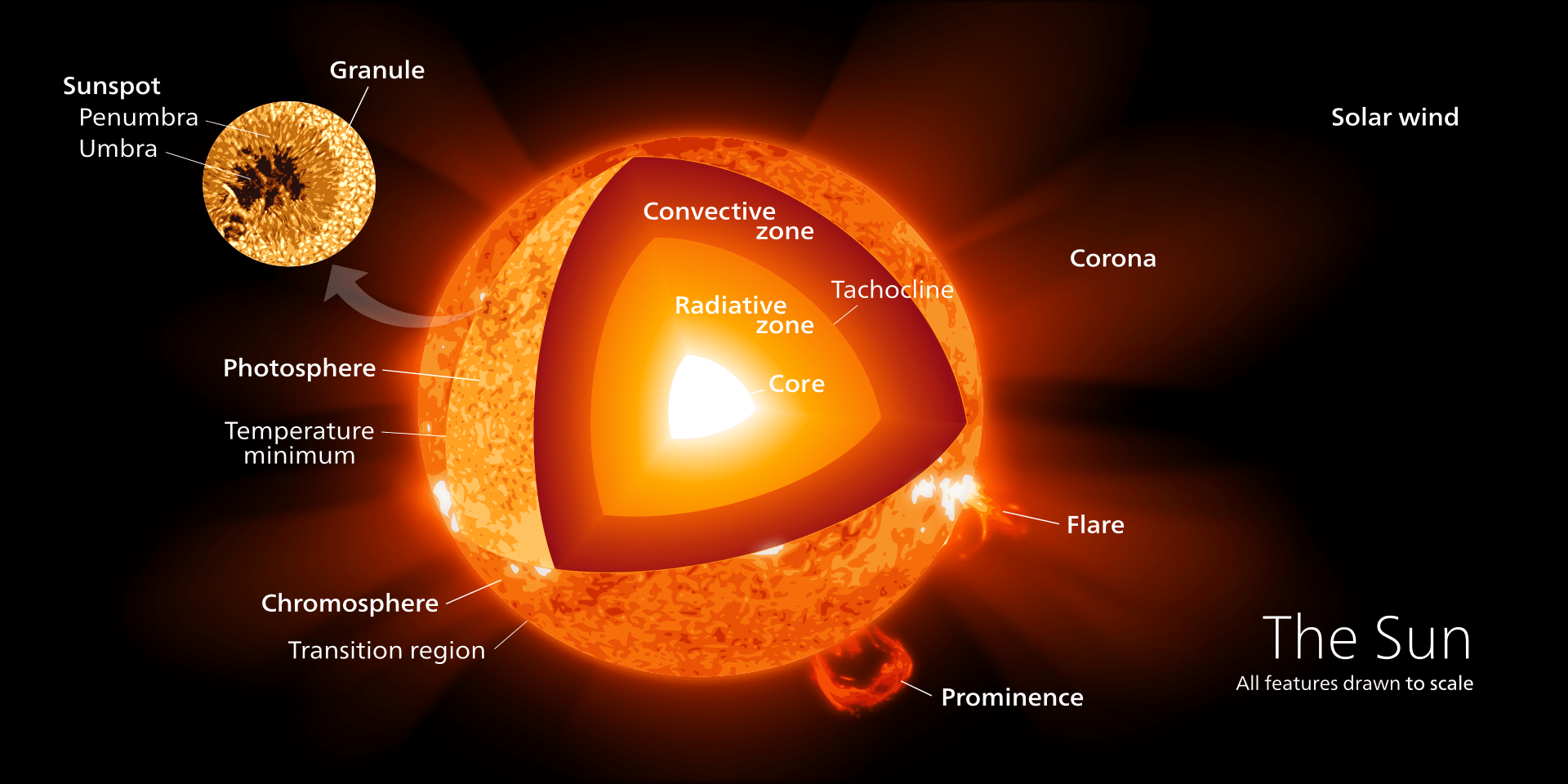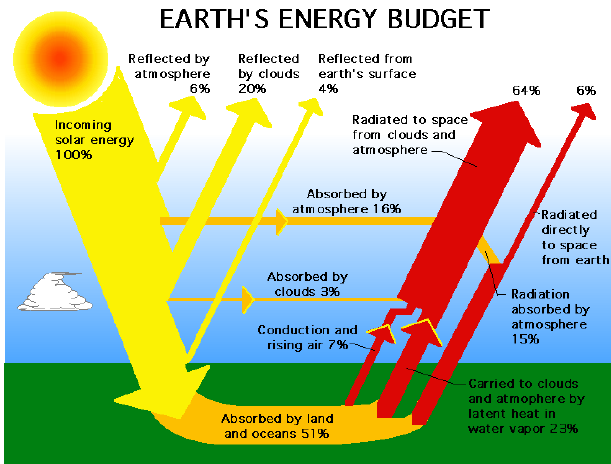
The Sun
The Sun is the center of our solar system, around which all planets orbit. Like all stars, the Sun is a giant ball of super heated hydrogen gas. Containing 98.6 percent of the solar system’s total mass, the Sun provides nearly all of Earth’s energy as electromagnetic radiation. The absorption, reflection and redistribution of this energy from the Sun fuels Earth’s weather and climate. The Sun’s surface is not firm like Earth’s; it is composed of churning active gases, hot enough to vaporize any solid. The energy produced and emitted by the Sun provides warmth and light for all planets. Its core, containing only seven percent of the Sun’s volume, but half its mass, fuels the star with nuclear fusion. Some features of the Sun’s surface are the following:
- Core: Energy is produced by the fusion of hydrogen into helium at 15 million °C in the Sun’s intensely hot core.
- Radiative Zone: Energy is transported from the core toward the surface by electromagnetic waves.
- Convective Zone: This is the outer portion of the Sun. Energy is carried to the surface by convective motion.
- Prominence: Long-lasting arcs of gas erupting from the Sun’s surface, held in place by strong magnetic fields.
- Photosphere: The visible surface of the Sun.
- Flares: Magnetic storms on the surface release bursts of high-energy particles, gas and radiation.
- Sunspots: Dark spots indicate regions of magnetic activity that inhibit convection. Observed with telescopes since the 1600s, sunspot activity fluctuates in 11-year cycles. Sunspot cycles impact the Earth’s climate as the energy emitted by the Sun varies.

The Energy Cycle
Energy produced by fusion in the Sun’s core reaches Earth as short-wave electromagnetic radiation. After this energy encounters the Earth’s atmosphere, this energy is reflected, absorbed, transformed and radiated back into space in a complex process known as the energy cycle polska-ed.com. The balance between incoming and outgoing radiation results in Earth’s stable temperature. This diagram illustrates solar radiation as it enters and leaves Earth’s atmosphere.

In next week’s post we’ll be dealing with the seasons.


0 comments
Write a comment